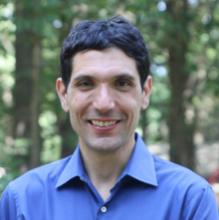The 2014 Nobel Prizes: What You Should Know Ahead of Time

(Inside Science) -- We at Inside Science are getting ready for our coverage of all the science-related Nobel Prize announcements: physiology/medicine on Monday, physics on Tuesday, and chemistry on Wednesday. If the peace, economics, or literature prizes are related to the kinds of topics we normally cover, then expect to see something from us.
This Tuesday, I'm on the docket to write Inside Science's article on the physics prize immediately after it is announced, which can be as early as 5:45 a.m.in my time zone on the U.S. East Coast. So I'll have a 4 a.m. date with my alarm clock next week. The run-up to next week's events has gotten me thinking about the 2014 Nobel Prize, and about the other Nobel Prizes that I've followed professionally since 1992. Here are some of my insights, and I hope you enjoy them.
To begin, I am most familiar with the field of physics. If you want to see predictions on all the prizes, you can check out these sites for intelligent analysis:
Thomson Reuters 2014 Predictions (Medicine, Chemistry, Economics, Physics)
Chemical and Engineering News Online: Countdown to the 2014 Chemistry Nobel Prize
I have no inside information about the 2014 physics prize, or any of the other prizes. The same is true for everyone I know, including top scientists, science writers, and my other colleagues at the American Institute of Physics, which produces Inside Science. There is no batphone between the Royal Swedish Academy and others in the science community. Invariably, many of us will get emails or phone calls asking if we have advance knowledge of the prize winners. The boring, mundane answer is no. The Nobel Foundation has committees for each Nobel Prize, and from every indication, they are very discreet, airtight groups. We are guessing along with everyone else.
It's actually quite remarkable how well the Nobel committees keep the prizes and recipients secret until the announcements. (Update: In the earlier version of this blog, I wrote we were unaware of any leaks of prize information prior to the official announcements. But I have now found that Time had reported one for the 2013 Nobel Peace Prize shortly before it was announced. And bookmakers reported an abrupt increase in the odds for poet Tomas Tranströmer to win shortly before he was named the recipient of the 2011 Nobel Prize in Literature, according to Sweden's The Local newspaper; Swedish authorities investigated the matter and eventually came to no conclusions, according to the Wall Street Journal. Nonetheless, the Nobel committees' overall track record seems excellent for keeping the prize information under wraps.)
The Nobel committees contact the often bleary-eyed recipients in the very early morning before announcing the prizes. Last year's physics announcement was delayed because of the committee's difficulty in reaching recipient Peter Higgs. He was traveling and doesn't own a cellphone. For the 2012 Nobel Prize in physiology or medicine, one of the recipients, Ralph Steinman, died the Friday before the prize was announced, unbeknownst to the Nobel committee. Nobel Prizes can only be given to living individuals, based on the conditions set forth by the Nobel Foundation. But in my opinion, the Nobel committee did the right thing in 2011 and kept Steinman as the recipient even though he was deceased.
When Alfred Nobel established the prizes in his last will, in 1895, he specified that each prize can be awarded to up to three individuals and two topics at most. Of course, everyone realizes that virtually all major scientific advances nowadays involve multiple teams, usually consisting of many people. In a step towards acknowledging this reality, the Nobel physics committee last year did something remarkable by acknowledging the ATLAS and CMS experimental collaborations at the Large Hadron Collider for contributing to the discovery of the Higgs boson. While the experimental collaboration did not share any of the prize money, this was a meaningful gesture and I'm sure we haven't seen the last of it.
From 1992 to 2007, I worked as a science writer at the American Institute of Physics with my colleague Phil Schewe, a science writer now at the Joint Quantum Institute in Maryland. Every year, we issued information on the prizes to other science reporters and shared our knowledge and insights about them. In the early days, before the explosion of the Internet, we listened for the names of the recipients on the radio, and awaited a fax from Sweden later that morning. Today, the Nobelprize.org streams live video of the announcements and distributes pages and pages of descriptions of the prizes within minutes of the announcements. I welcome this advance!
In some years, we managed to guess the exact topic of the prize, like in 2001, when we predicted that the creation of a new state of matter known as the Bose-Einstein condensate would win. In this type of matter atoms act as waves that essentially overlap with one another and form a single, coordinated "superatom." This was a major discovery in 1995 and we sensed a prize on this topic would be quickly awarded.
But other years, as in 1999, were complete surprises to us, when theoretical physicists Gerard 't Hooft and Martinus J. G. Veltman won for their work on the electroweak interaction, one of the four fundamental forces in nature. They were extremely worthy recipients, but the topic was not on our minds, as this seminal work was performed in the early 1970s. We were also kept on our toes in 2000, the following year, when Jack Kilby, an electrical engineer, won half of the prize for his role in creating the integrated circuit. This was not a fundamental physics advance, such as creating a new state of matter, but more of a practical one, with wide societal benefits. We took this as a signal that the physics Nobel Prize committee wanted to recognize contributions such as the integrated circuit that had broad impact on society.
While most of the physics prizes in the 21st century have mostly been awarded for fundamental discoveries, the 2009 physics prize was devoted to two practical topics: "for groundbreaking achievements concerning the transmission of light in fibers for optical communication" and "for the invention of an imaging semiconductor circuit – the CCD sensor," the same technology that we now find ubiquitously in smartphone cameras. This practical streak of the Nobel committee plays into my top prediction for the 2014 prize.
And what is my top prediction? You'll find out tomorrow, right here on Inside Science Currents.

